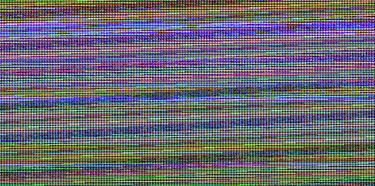It’s amazing how complicated it can be to locate data. Almost as complicated is the spectrum of forms which data can take. As a bookseller, I was often asked about helping someone find a green or a blue book, usually accompanied by a gesture meant to show just how big the book might be. Or how about the book they heard about on NPR, maybe it starts with a P or a T, perhaps it was profiled three or four days ago, or maybe it was an Oprah book…”Do you have it?”
Figuring out what someone wants is an art, and there should be awards given out to those who are good at it. At library school, we have classes dedicated to this art, and retailers are always interested in sending staff to seminars to perfect the art as well. The problem is, most people aren’t really sure what they want in the first place. “Where do you want to eat?” “Oh, I dunno, what are you in the mood for?” …and on and on. But we love our modern tools of selection, and there’s a reason people respond to “you may also like…”
I can’t tell yet how accurate my observation is, but I feel that as we become more accustomed to abstract self-correcting Internet data searches, we become less focused in real world physical environments. We rely less on our memory since it’s so easy to del.icio.us it, or save it to the flash drive, bookmark it, blog it, tumblr it….in a way our teachers’ fears about calculators writ large in our collective memory. Where’s Guy Montag when you need him?
Content management systems continually evolve and improve, however, and with some elegant programming we can create remarkably flexible environments for locating digital data. But what about physical artefacts, like books? The more ways we have of ticking off our selections for areas of interest, and for sharing them, the less we will need to remember. There are many businesses out there that will happily remember for us.
One option for those of us in the physical world will be vertically integrated Radio Frequency Identification (RFID) technology. At BookExpo there was a Dutch Company called BGN that held a seminar for industry professionals singing about the virtues of RFID for both information consumers and stewards. RFID would allow a book to be located in a building no matter how grieviously mis-shelved it is, which would be a boon for book sellers and librarians alike.
A major stumbling block to implementation is the lack of vertical integration, or recognition by producers, distributors and purchasers alike to work together toward cost-effective implementation at multiple levels. Tesco stores are starting to use something they call “smart shelves” using RFID, Wal-Mart uses similar technology called an Electronic Product Code (EPC) to track shipments, and KSW-Microtec are developing RFID tags that can be sewn into clothing. There’s even a website devoted to RFID investing with a cornucopia of links to almost every arm of the technology. The pro-industry RFID Journal gives a good snapshot of the state of the technology. None of this, however, is meant to be a glowing endorsement.
A real concern is privacy. If RFID can be used to pinpoint an item on the shelf, what prevents it from being followed anywhere else? This article by David Molnar and David Wagner highlights the concerns in a library environment fairly comprehensively, but the issue is much larger than that. As mentioned in this Glenn Bischoff article on the Mobile Radio Technology website, “RFID tags are ‘remotely and secretly readable,’ a vulnerability that becomes more troubling when the public isn’t aware its personal information might be at risk, said Melissa Ngo, director of the Electronic Privacy Information Center’s Identification and Surveillance Project.” Lee Tien, an Electronic Frontier Foundation attorney, “described RFID as a ‘very insecure’ technology that’s likely to pass along sensitive information.”
Alarmist, perhaps, and not necessarily in respect to the current limitations of the technology. My intuition is, though, that the more freedoms we give up outright the harder it is to ask for them back at a later date. As with every technology, every law, and every compromise between convenience and responsibility, there is a tipping point. Where do we draw the line?





 Posted by Vaucanson's Duck
Posted by Vaucanson's Duck 



